Figures & data
Figure 1. Study area: (a) geographic position of the study area; (b) the doline; (c) the earth hummock vegetation; (d) locations of the sampling points.
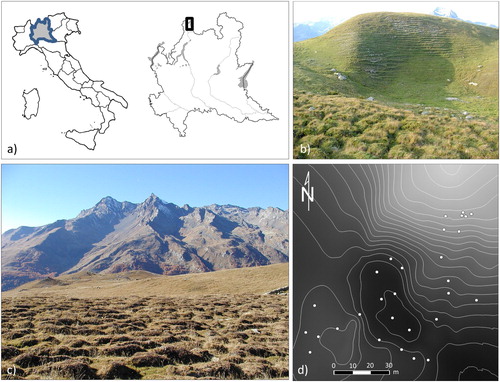
Table 1. Investigated soil properties, environmental variables, vegetation, and their abbreviations.
Figure 2. Vegetation types of the investigated doline: (a) number of contacts; (b) number of species; and (c) aboveground biomass (2006–2018). SV: Sesleria varia grassland; RP: rich pasture; N: Nardus stricta pasture; EH: earth hummocks; B: bentgrass.
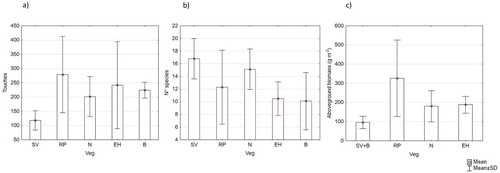
Table 2. Total root density (g dm−3) for each vegetation type in the three investigated layers.
Figure 3. Functional profiling through Grime’s CSR model (R: ruderal strategy; C: competitive strategy; S: stress-tolerant strategy) for each sampling point of the investigated vegetation types (SV: Sesleria varia grassland; RP: rich pasture; N: Nardus stricta pasture; EH: earth hummocks; B: bentgrass).
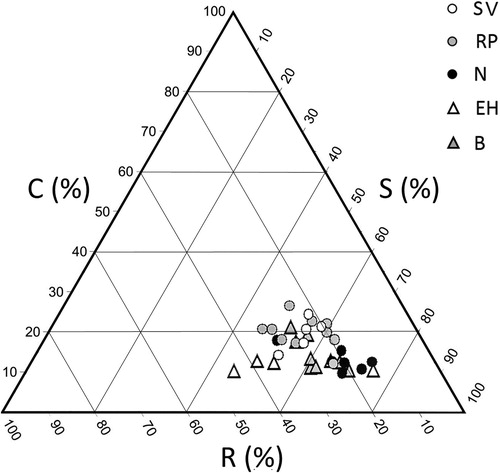
Table 3. Main properties of representative soil profiles (taxonomy according to IUSS Working Group WRB, Citation2015).
Table 4. Main statistics of soil properties in the 0–10 cm layer. For abbreviations and units of variables, see .
Figure 4. Schematic representation of soil–plant relationships along a topographic transect in the investigated doline. The dotted line approximately represents the depth of the substrate. B: bentgrass; RP: rich pasture; SV: Sesleria varia grassland; EH: earth hummocks; N: Nardus stricta pasture.
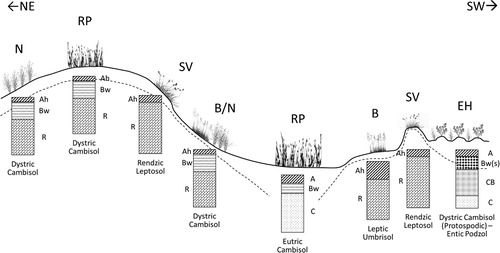
Figure 5. Box plots for the comparison of soil properties among vegetation types (B: bentgrass; RP: rich pasture; SV: Sesleria varia grassland; EH: earth hummocks; N: Nardus stricta pasture). Different letters indicate statistically significant differences (p < 0.05) in the response variable among vegetation types in the mixed model. For abbreviations of variables, see .

Figure 6. CCA analysis of plant species in relation to the considered soil and environmental variables. Significant variables (at p < 0.05) are reported within rectangles. Species abbreviations: Agrostis schraderiana: Agr_schr; Alchemilla vulgaris: Alch_vul; Carex caryophyllaea: Car_car; Festuca nigrescens: Fest_nig; Heliantemum oleandicum: Hel_olea; Hippocrepis comosa: Hipp_com; Nardus stricta: Nard_str; Phleum alpinum: Phl_alp; Phleum pratense: Phl_prat; Poa alpina: Poa_alp; Sesleria varia: Sesl_var; Trifolium alpinum: Trif_alp; Vaccinum uliginosum: Vacc_uli. For abbreviations of variables, see .
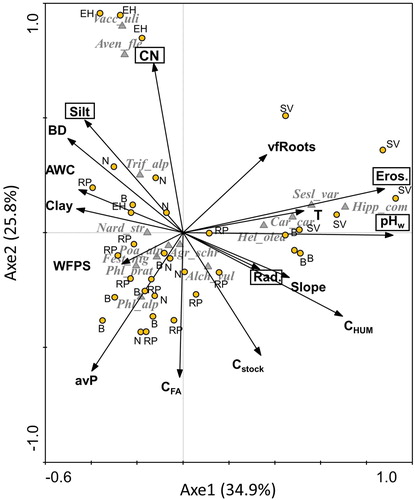
Table 5. Canonical correlation analysis (CCA) for the 14 most abundant plant species in relation to the considered environmental variables (soil properties of the 0–10 cm layer).
Figure 7. PCA analysis. Plot of CSR components, considered soil and environmental variables, and vegetation types. For abbreviations of variables, see .
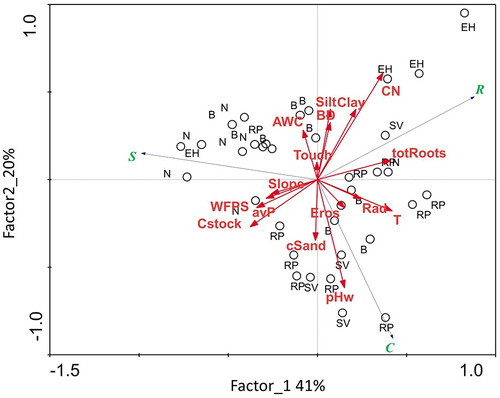
Supplemental Material
Download MS Word (24.9 KB)Data availability
The datasets generated and analyzed during the current study are available in the Pangaea repository: Ferré, Chiara; Comolli, Roberto (2019): Soil and plant data of a pasture of the Italian Alps (Andossi, SO). PANGAEA, https://doi.org/10.1594/PANGAEA.910055.
